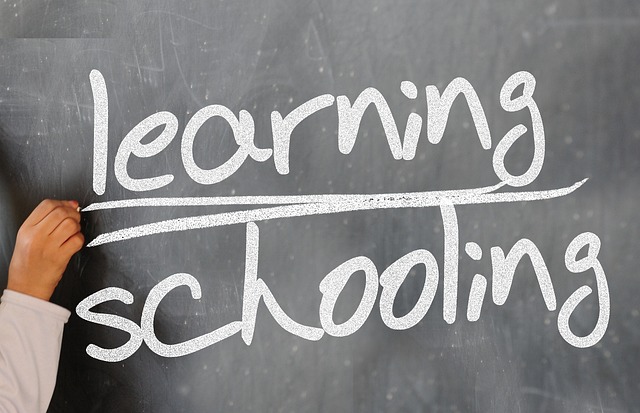Understanding the Path to a Career in Aviation Training: Key Insights and Considerations
As interest in aviation careers grows, many are taking a closer look at what goes into airline training and how individuals prepare for future roles in the field. This guide outlines key aspects people often explore—from simulator-based preparation to regulatory certifications—and what factors are weighed when considering various aviation paths. Explore commonly followed steps, entry points, and the types of programs people tend to evaluate as they navigate this dynamic and evolving industry.

What are the initial steps in pilot training programs?
The journey to becoming a pilot typically begins with ground school training. This fundamental phase covers essential theoretical knowledge, including aerodynamics, navigation, meteorology, and aviation regulations. Aspiring pilots must also obtain a medical certificate to ensure they meet the physical requirements for flying.
Following ground school, students progress to flight training. This hands-on experience usually starts with small, single-engine aircraft under the guidance of certified flight instructors. Students learn basic maneuvers, takeoffs, landings, and navigation techniques. As they accumulate flight hours and demonstrate proficiency, they work towards their first solo flight—a significant milestone in any pilot’s career.
What are the common aviation school requirements?
Aviation schools have specific requirements that prospective students must meet. These typically include:
-
Age requirements: Most schools require students to be at least 17 years old to begin training, although some programs allow younger students to start ground school.
-
Educational background: A high school diploma or equivalent is usually the minimum educational requirement. Some advanced programs may require college-level coursework.
-
English proficiency: As English is the international language of aviation, students must demonstrate proficiency in reading, writing, and speaking English.
-
Physical fitness: Prospective pilots must pass medical examinations to obtain the necessary medical certificates required for flying.
-
Background checks: Many schools conduct background checks to ensure students meet security requirements for aviation training.
It’s important to note that specific requirements may vary between schools and countries, so research into individual program requirements is essential.
How do flight simulator courses enhance pilot training?
Flight simulator courses play a crucial role in modern aviation training. These sophisticated systems replicate real-world flying conditions, allowing students to practice procedures, emergency scenarios, and complex maneuvers in a safe, controlled environment. Benefits of flight simulator training include:
-
Cost-effective practice: Simulator time is generally less expensive than actual flight time, allowing for more extensive training.
-
All-weather training: Students can experience various weather conditions and challenging scenarios that may be impractical or unsafe to recreate in real flights.
-
Procedural proficiency: Simulators allow for repetitive practice of procedures, enhancing muscle memory and decision-making skills.
-
Advanced aircraft familiarization: Students can gain experience with complex aircraft systems and cockpit layouts before transitioning to actual aircraft.
-
Scenario-based training: Instructors can create specific scenarios to test and improve students’ skills in handling emergencies and unusual situations.
As technology advances, flight simulators become increasingly realistic, providing an invaluable tool in the pilot training process.
What are the requirements for obtaining a commercial pilot license?
Obtaining a commercial pilot license (CPL) is a significant step for those pursuing a career in aviation. Requirements typically include:
-
Age: Candidates must be at least 18 years old.
-
Flight experience: A minimum of 250 flight hours is required, including specific hour requirements for various types of flight operations.
-
Ground training: Comprehensive knowledge of advanced aviation topics, including commercial operations, complex aircraft systems, and advanced meteorology.
-
Medical certification: A first or second-class medical certificate, depending on the specific type of commercial operations.
-
Written examination: Candidates must pass a comprehensive written test covering all aspects of commercial pilot operations.
-
Practical test: A checkride with an FAA-designated examiner to demonstrate flight proficiency and decision-making skills.
-
Instrument rating: Most commercial pilot positions require an instrument rating, allowing pilots to fly in conditions with reduced visibility.
It’s important to note that these requirements can vary slightly between countries and regulatory authorities. Aspiring commercial pilots should consult their local aviation authority for specific requirements.
How long does it typically take to complete aviation training?
The duration of aviation training can vary significantly depending on the specific program, training intensity, and individual progress. Here’s a general timeline for different levels of pilot certification:
| Certification Level | Typical Duration | Minimum Flight Hours Required |
|---|---|---|
| Private Pilot | 3-6 months | 40 hours |
| Commercial Pilot | 12-18 months | 250 hours |
| Airline Transport Pilot | 2-5 years | 1,500 hours |
Prices, rates, or cost estimates mentioned in this article are based on the latest available information but may change over time. Independent research is advised before making financial decisions.
It’s important to note that these timelines are approximate and can be influenced by factors such as training frequency, weather conditions, and individual aptitude. Some accelerated programs may offer faster completion times, while part-time training can extend the duration significantly.
Aviation training is a comprehensive process that requires dedication, skill development, and a significant investment of time and resources. From initial pilot training programs to advanced certifications, aspiring aviators must navigate a path of rigorous education, practical experience, and continuous learning. By understanding the requirements, leveraging modern training tools like flight simulators, and committing to the journey, individuals can achieve their dreams of a career in the skies. As the aviation industry continues to evolve, the importance of quality training remains paramount in ensuring the safety and efficiency of air travel worldwide.




